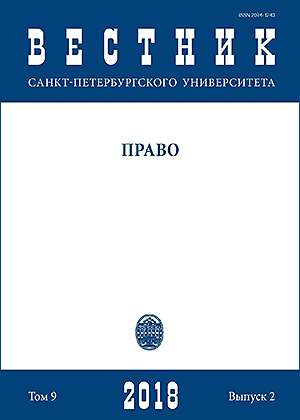Legal entities classification models in the Russian Federation and China
DOI:
https://doi.org/10.21638/11701/spbu14.2018.206Abstract
The author of the article applies the method of comparative historical and modern analysis to trace the classifications of legal entities, which have evolved in different stages of development of the Russian Federation and China. The latter has chosen a “progressive” way of reforming the transition from a planned economy to a market economy, and Russia completely abandoned the Soviet model, using “shock therapy” to implement reforms. From a legislative point of view, Russia tried to abandon the Soviet model, and China still adhered to certain provisions that have remained since the Stalin era. In spite of the fact that the Chinese “progressive” approach more protected the economy from instability, in the area of designing the legal system, China has not fully completed the transition to a market economy. Searching for suitable models, both countries gradually got rid of the Soviet model of planned economy classification. After 40 years of implementing the policy of Reform and Opening, economic construction in China has achieved brilliant results. China is currently amending the classification of legal entities, and we should pay attention to it, as well as conduct research and comparison. Now the promulgation of the Civil Code (general part) of China has caused the previous state to be broken. The new corporate classification model is undoubtedly a new breakthrough. Russia has also formed its own classification model of legal entities. As a result, the legal entities classification in these countries has become closer again, however each country still possesses its own features.
Keywords:
classification, legal entity, China, law, comparison, China’s Corpus of civil law, model
Downloads
References
Downloads
Published
How to Cite
Issue
Section
License
Articles of "Vestnik of Saint Petersburg University. Law" are open access distributed under the terms of the License Agreement with Saint Petersburg State University, which permits to the authors unrestricted distribution and self-archiving free of charge.






